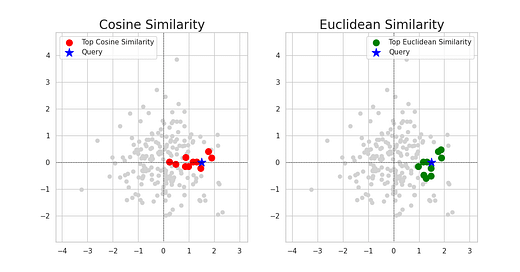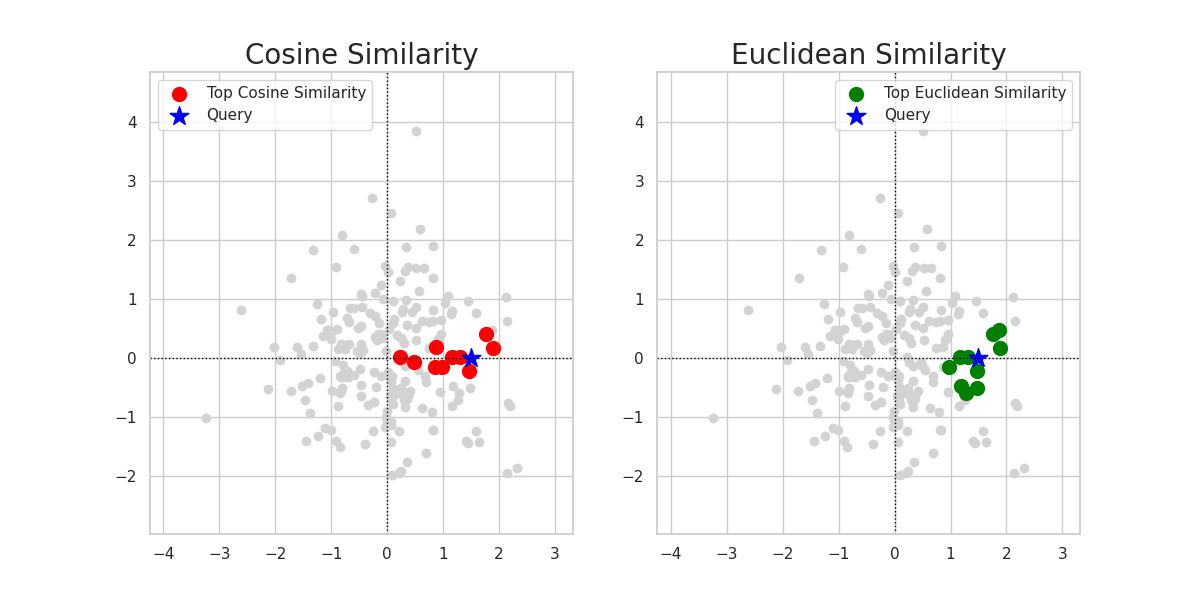Is cosine similarity always the best choice?
Choosing the right similarity metric for your recommendation system
Developing an effective recommendation system starts with creating robust vector embeddings. While many default to cosine similarity for comparing vectors, choosing the right metric is crucial and should be tailored to your specific use case. For instance, cosine similarity focuses on pattern recognition by emphasizing the direction of vectors, whereas Euclidean distance also factors in magnitude.
𝘒𝘦𝘺 𝘚𝘪𝘮𝘪𝘭𝘢𝘳𝘪𝘵𝘺 𝘔𝘦𝘵𝘳𝘪𝘤𝘴 𝘧𝘰𝘳 𝘙𝘦𝘤𝘰𝘮𝘮𝘦𝘯𝘥𝘢𝘵𝘪𝘰𝘯 𝘚𝘺𝘴𝘵𝘦𝘮𝘴:
𝗖𝗼𝘀𝗶𝗻𝗲 𝗦𝗶𝗺𝗶𝗹𝗮𝗿𝗶𝘁𝘆: Focuses on directional relationships rather than magnitude
• Content-based recommendations prioritizing thematic alignment
• Vision Transformer (CLIP, ViT, BEiT) embeddings where directional relationships matter more than magnitude
𝗘𝘂𝗰𝗹𝗶𝗱𝗲𝗮𝗻 𝗗𝗶𝘀𝘁𝗮𝗻𝗰𝗲: Accounts for both direction and magnitude
• Product recommendations measuring preference intensity
• CNN feature comparisons (ResNet, VGG) where spatial relationships and magnitude differences represent visual similarity
An animation helps to understand it in a better way. You can use the code for animation to try out more things.
You can explore more, such as 𝗠𝗶𝗻𝗸𝗼𝘄𝘀𝗸𝗶 𝗗𝗶𝘀𝘁𝗮𝗻𝗰𝗲 and 𝗛𝗮𝗺𝗺𝗶𝗻𝗴 𝗗𝗶𝘀𝘁𝗮𝗻𝗰𝗲. I recommend conducting comparative evaluations through 𝗔/𝗕 𝘁𝗲𝘀𝘁𝗶𝗻𝗴 to determine which metric delivers the most relevant recommendations for your specific visual recommendation application.






